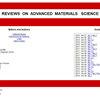利用机器学习策略分析废大理石和玻璃粉对自密实混凝土抗压强度的影响
IF 3.9
4区 材料科学
Q2 MATERIALS SCIENCE, MULTIDISCIPLINARY
引用次数: 0
摘要
众所周知,自密实混凝土(SCC)能够在自重作用下流动,无需机械振动,具有减少劳动力和缩短施工时间等优点。然而,SCC 水泥含量的增加会导致成本和碳排放量的增加。本研究利用废弃大理石和玻璃粉作为水泥替代品,解决了这些难题。本研究的主要目的是创建机器学习模型,利用基因表达编程(GEP)和多重表达编程(MEP)生成数学方程来捕捉变量之间的相关性,从而预测 SCC 的抗压强度(CS)。利用统计指标评估了模型的性能,并在由八个独立变量组成的实验数据集上进行了超参数优化。结果表明,MEP 模型优于 GEP 模型,R 2 值为 0.94,而 GEP 模型为 0.90。此外,敏感性和 SHapley Additive exPlanations 分析表明,影响 CS 的最重要因素是固化时间,其次是坍落度流量和水泥量。本研究提出了一种可持续的 SCC 设计方法,可提高效率并最大限度地减少测试需求。本文章由计算机程序翻译,如有差异,请以英文原文为准。
Analyzing the efficacy of waste marble and glass powder for the compressive strength of self-compacting concrete using machine learning strategies
Self-compacting concrete (SCC) is well-known for its capacity to flow under its own weight, which eliminates the need for mechanical vibration and provides benefits such as less labor and faster construction time. Nevertheless, the increased cement content of SCC results in an increase in both costs and carbon emissions. These challenges are resolved in this research by utilizing waste marble and glass powder as cement substitutes. The main objective of this study is to create machine learning models that can predict the compressive strength (CS) of SCC using gene expression programming (GEP) and multi-expression programming (MEP) that produce mathematical equations to capture the correlations between variables. The models’ performance is assessed using statistical metrics, and hyperparameter optimization is conducted on an experimental dataset consisting of eight independent variables. The results indicate that the MEP model outperforms the GEP model, with an R 2 value of 0.94 compared to 0.90. Moreover, the sensitivity and SHapley Additive exPlanations analysis revealed that the most significant factor influencing CS is curing time, followed by slump flow and cement quantity. A sustainable approach to SCC design is presented in this study, which improves efficacy and minimizes the need for testing.
求助全文
通过发布文献求助,成功后即可免费获取论文全文。
去求助
来源期刊

Reviews on Advanced Materials Science
工程技术-材料科学:综合
CiteScore
5.10
自引率
11.10%
发文量
43
审稿时长
3.5 months
期刊介绍:
Reviews on Advanced Materials Science is a fully peer-reviewed, open access, electronic journal that publishes significant, original and relevant works in the area of theoretical and experimental studies of advanced materials. The journal provides the readers with free, instant, and permanent access to all content worldwide; and the authors with extensive promotion of published articles, long-time preservation, language-correction services, no space constraints and immediate publication.
Reviews on Advanced Materials Science is listed inter alia by Clarivate Analytics (formerly Thomson Reuters) - Current Contents/Physical, Chemical, and Earth Sciences (CC/PC&ES), JCR and SCIE. Our standard policy requires each paper to be reviewed by at least two Referees and the peer-review process is single-blind.
 求助内容:
求助内容: 应助结果提醒方式:
应助结果提醒方式:


